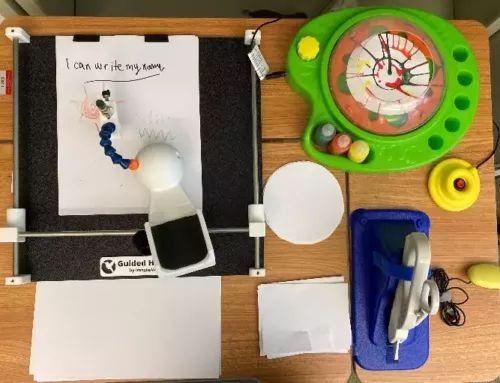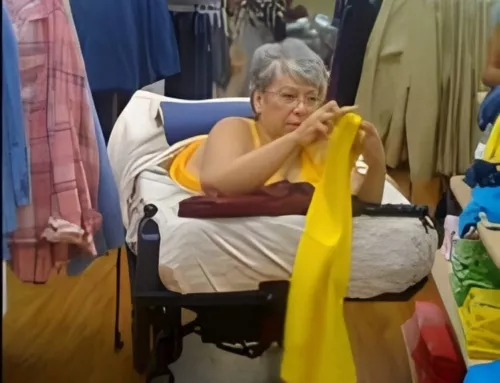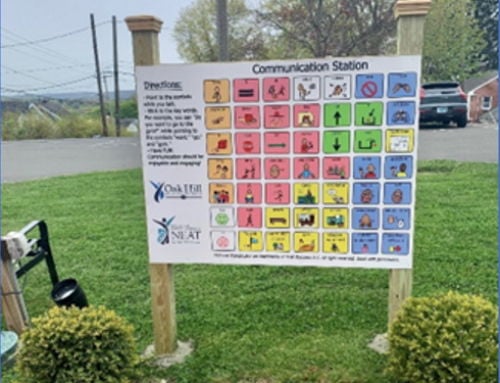AT Act Programs Support Remote Learning

In this latest COVID-19 Issue Brief, AT3 Center highlights the activities of the New Jersey, Idaho, and US Virgin Islands AT Act Programs to support remote learning.

The COVID-19 pandemic has taken a heavy toll on vulnerable populations, including students with disabilities who were abruptly shifted to remote learning. In response, State and Territory AT Act Programs played an essential role supporting students, families, educators, and therapists as they transitioned to learning and teaching in new ways.
Spotlight On Programs Supporting Remote Learning:
New Jersey:
The New Jersey AT Act Program (ATAC) responded to the COVID-19 call for remote learning by hosting webinars for training, turning its annual AT conference virtual, and creating a community of practice for educators, AT practitioners, and others to lean into for assistance and support. Mike Marotta, ATAC Program Director, says he did not anticipate the virtual Town Hall would evolve into a full-blown community of practice, but that was its immediate trajectory once school closures were announced. The Zoom series began in March of 2020, invited through the ATAC network and through #ATChat on Twitter. The questions posed included “How do we ensure that remote instruction is accessible to all students? How can we continue to meet the needs of students who require assistive technology? What do we do about providing related services (OT, PT, SLP) to these students?”
The Town Halls occasionally attract nationally known AT panelists, but the real value, Marotta emphasizes, is how the group soon took over. “We began with about eight attendees, some with their cameras off, some who’d email me their questions and leave their mics muted. Last week we had over 30 participants, everyone with their cameras on directing the agenda.” Remarkable sharing and problem-solving take place in these meetings. One Town Hall had participants trying out language translation smartphone apps with Zoom to troubleshoot one attendee’s challenge with reaching parents in a diverse district. “It worked!” Marotta reports. “We worked out various tech issues together and came up with a protocol that this Town Hall participant later used successfully!”
One group of regulars is an entire AT team from Illinois. Sometimes there are special topics; the QIAT leadership presented about using the Quality Indicators for A.T. during this era of remote instruction. The meetings are Mondays at noon, and each is recorded and archived. “You know you’re filling a need when people let you know they watch the whole recording if they can’t make a meeting,” Marotta says. “And when others are happy to facilitate if I can’t be there. I don’t think I could end this even if I wanted to.”
Idaho:
In the spring of 2020, when the state of Idaho began to shut down because of COVID-19, the Idaho Assistive Technology Project (IATP) made a quick pivot from a hybrid model to fully remote educational services. IATP receives funding from the Idaho State Department of Education, and through SESTA (Idaho’s Special Education Support and Technical Assistance program), IATP provides AT services to K-12 schools statewide, including technical assistance and training. Janice Carson, Program Director of IATP, says the program was well-positioned to make this shift because of the existing Idaho Training Clearinghouse, a massive online repository of resources and online learning opportunities that began years ago (as a calendar of regional trainings).
IATP pivoted to remote services while educators and administrators were urgently transforming their entire education model to remote learning themselves. “A lot of things were happening at the same time,” Carson says. “The Local Education Agencies were creating learning plans for their districts, and IATP was creating an online support series for how to provide remote AT services to students at home.” IATP additionally created quick guides and padlets of resources for educators to help with the remote transition.
Meanwhile, families, schools, and districts were reaching out to the program for equipment to access remote learning and for any needed AT; and so IATP moved to ship devices to homes. That transition eventually led Carson to collaborate with Joy Zabala on how to use her SETT framework to evaluate AT and support students, families, and educators in an entirely new environment and context. The work included supporting SLPs statewide to conduct successful remote AAC assessments and services. “I think what I’m most proud of is that [during this time] we didn’t stop services,” Carson says. “When we couldn’t physically be in the buildings, we were buying and dropping equipment to people’s homes. I’m proud that our staff jumped in and we continued working shoulder-to-shoulder as part of SESTA. We just kept going. Everyone just kept going.”
US Virgin Islands
In the US Virgin Islands, the pandemic has put an added stress on a communication infrastructure that was already inadequate as the islands rebuild from the hurricanes of 2017. Remote learning depends on access to the internet and access to the internet, for many, has been about taking advantage of public internet sites or publicly available internet. “After the hurricane, everybody was sharing Wi-Fi everywhere,” says the US Virgin Islands AT Act Program (VITRAID) Director Kimberly Mills. Sharing Wi-Fi became business as usual. “So, with COVID-19, even the store that rents power washers and heavy equipment invited the community, and especially students, to sit in their parking lot to log onto the internet,” she says. Pragmatically, VITRAID helped disseminate available internet locations via Facebook and the radio. More durably, the program applied for and has been awarded a USDA Rural and Distance Learning and Telemedicine grant.
At least 16 community-based remote conferencing sites will soon be installed throughout the US Virgin Islands. “They’re not a complete solution to our infrastructure needs,” Mills emphasizes. “But it’s one part of the answer for increasing overall access and communication.” The locations will be available to the public with not only broadband internet but large screens and computers for video conferencing. Partners include the Dept. of Labor, Dept. of Human Services, community-embedded churches, nonprofits, and Independent Living Centers. To support remote learning during COVID-19, VITRAID also held a webinar on Navigating Remote Learning for Students with Disabilities attended by both educators and families. The build-out of remote access locations, however, is foundational to everything from education to telemedicine. “We’re most excited about this program,” Mills says, “because these centers are being located with organizations that community members already consistently engage.”
Monthly Blog Digest
Search the blog
State AT Program Blogs
California
Florida
Indiana
Kentucky
Louisiana
Maryland
Massachusetts
Michigan
Montana
North Carolina
North Dakota
Utah
State AT Program Blogs
The AT3 Center, the Association of AT Act Programs (ATAP), and the Administration on Community Living (ACL) make no endorsement, representation, or warranty expressed or implied for any product, device, or information set forth in this blog. The AT3 Center, ATAP, and ACL have not examined, reviewed, or tested any product or device hereto referred.








